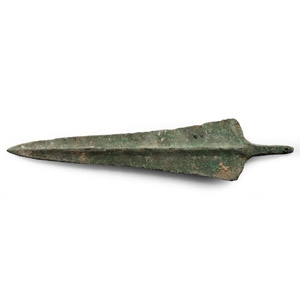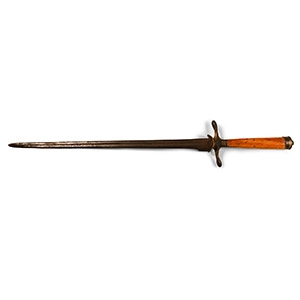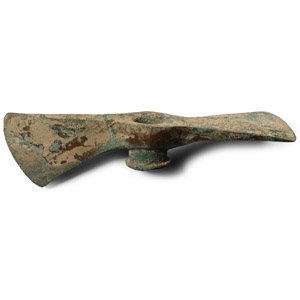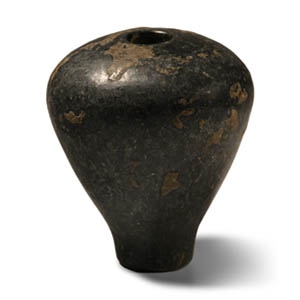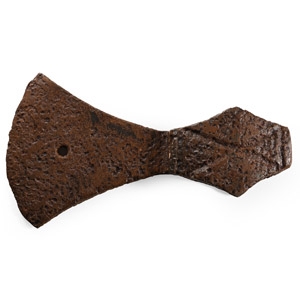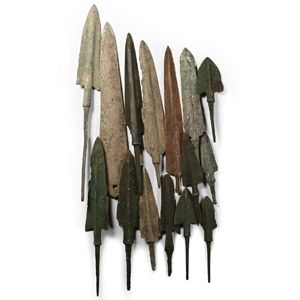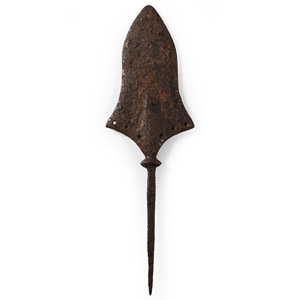Home > Auctions > 26 November - 1 December 2024
Ancient Art, Antiquities, Natural History & Coins
Acquired on the UK art market before 2000.
Property of an Essex, UK, gentleman.
Acquired 1980-2015.
Ex Abelita family collection.
See a similar dagger in Christie's, The Axel Guttmann Collection of Ancient Arms and Armour, part 1, London, 2002, item 31, p.34.
Moorey, Gordon and Khorasani created a classification of bladed weapons, according to which daggers are edged weapons no greater than 36cm in length, dirks (short swords) are between 36cm and 50cm in length, and swords are edged weapons greater than 50cm in length.
Acquired on the UK art market circa 2005.
From an old North Country, UK, collection.
Cf. Dufty, A.R., European Swords and Daggers in the Tower of London, London, 1974, pl.98 and 104(c).
From the private collection of Kenneth Machin (1936-2020), Buckinghamshire, UK; his collection of antiquities and natural history was formed since 1948; thence by descent.
From a specialist collection of militaria, London, UK, collected 1990s onwards.
Accompanied by an academic paper by military specialist Dr Raffaele D'Amato, dated 15 July 2019 and titled 'Eastern Roman Empire - Greek Fire Bomb or Hand Grenade (μεσαίον kακάβιον) 9th-11th century AD'.
Cf. Arendt, W. I., Granaten des 13-14. Jahrhunderts, die an der Wolga gefunden sind, Zeitschrift fur Historische Waffen-und Kostumkunde, 11 (1926-8), p.42; cf. Arendt, W., Die Spharisch-konischen Gefäße aus Gebranntem Ton, ibid; cf. Ayalon, D., Gunpowder and Firearms in the Mamluk Kingdom, London, 1956, p.16.
Apart from the use of siphons or manual flame-throwers called cheirosiphona, special corps of Roman soldiers employed terracotta grenades, in the form of small jars, abundantly evidenced in archaeological excavations. They were called μεσαία kακαβιά or κυτροκακάβια where the former had a bulbous shape and the latter a more cylindrical form.
Acquired 1980-2015.
Ex Abelita family collection.
Cf. Christie's, The Axel Guttmann Collection of Ancient Arms and Armour, part 2, London, 2004, item 34, p.32.
The adze-axe was a fundamental axe of many Bronze Age ancient cultures. Its form was one that lends itself to dual purposes - for war and work. As a tool, it functioned in woodwork in fabricating a variety of objects and as a weapon, its heavy mass and compact form make it a very deadly striking and chopping weapon, even able to defeat light armour.
UK private collection before 2000.
Acquired on the UK art market.
Property of a London gentleman.
Ex London gentleman's collection, 1990s.
Ex North American collection, 1970s-1990s.
Ex London, UK, collection, 1990s.
Private Buckingham, UK, collection, formed before 2000.
Ex North American collection, 1970s-1990s.
1081 - 1092 of 3419 LOTS


